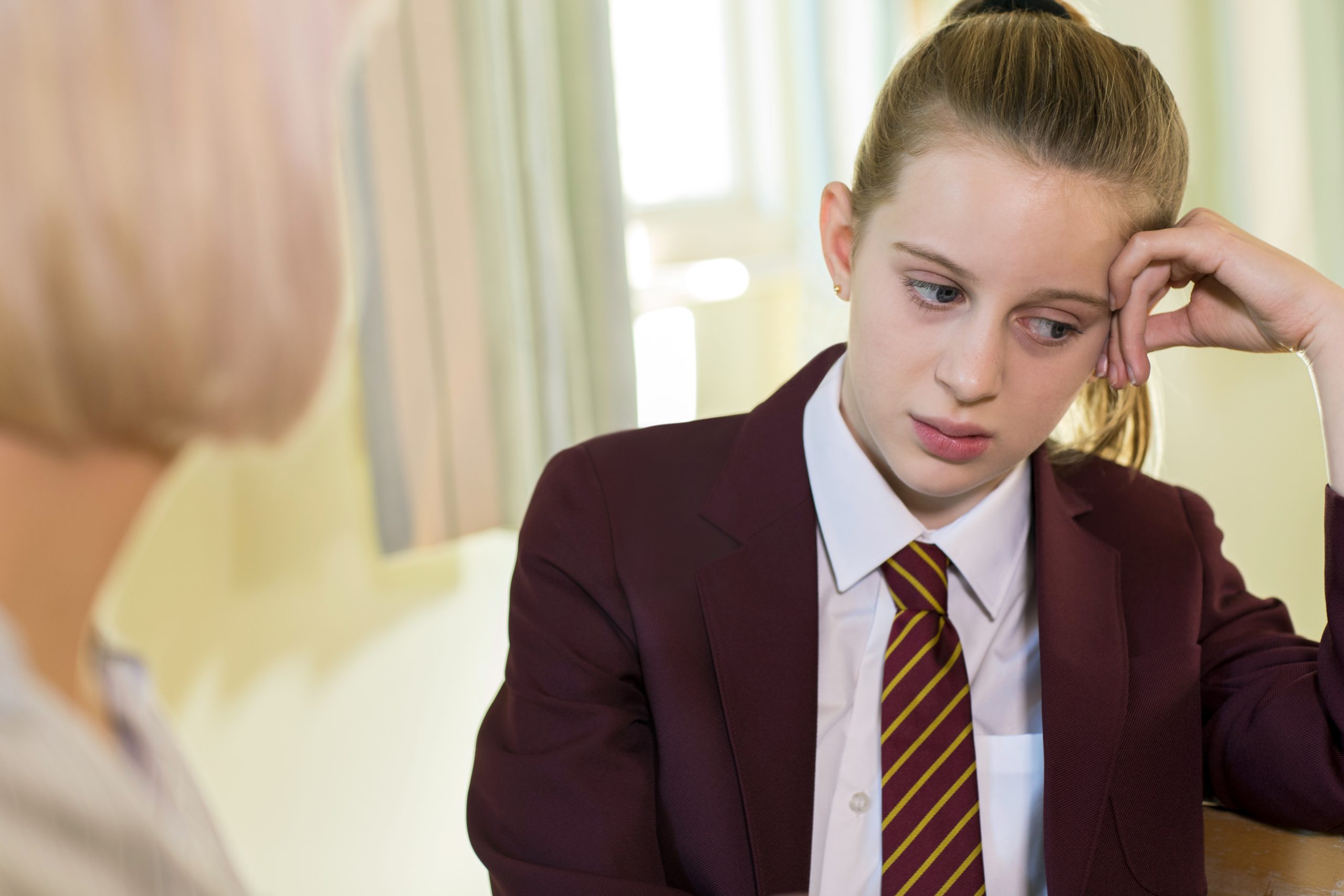
© Daisy Daisy- stock.adobe.com
<h2><span data-contrast="auto">Loneliness is highest among teenagers compared to any other age group, says a report from the World Health Organisation. </span><span data-ccp-props="{}"> </span></h2>
<p><span data-contrast="auto">WHO defines loneliness as a “negative, subjective emotional state resulting from a discrepancy between one’s desired and actual experiences of connection”.</span><span data-ccp-props="{}"> </span></p>
<p><span data-contrast="auto">This is distinct from social isolation, defined as an “objective state of having few roles, relationships and social interactions with others”.</span><span data-ccp-props="{}"> </span></p>
<p><a href="https://www.schoolnews.co.nz/latest-print-issue/" target="_blank" rel="noopener"><b>Read the latest print edition of <em>School News</em> online HERE.</b></a></p>
<p><span data-contrast="auto">Globally, an estimated 16 percent of people report being lonely. In teens, this rises to almost 21 percent, and the rate steadily decreases with age. People in low-income countries are more likely to report feeling lonely, and people from marginalised populations like rainbow, migrant, refugee, immigrant and disabled communities are more likely to experience social disconnection. </span><span data-ccp-props="{}"> </span></p>
<p><span data-contrast="auto">Loneliness is a significant wellbeing issue, with over 871,000 deaths annually being linked to loneliness. Living healthy and long lives is tied to having strong social connections, says the report. </span><span data-ccp-props="{}"> </span></p>
<p><span data-contrast="auto">The relatively high rate of loneliness in teens is consistent with previous research. The report notes this may be because of developmental considerations. As loneliness stems from a perceived break between expectation and actual social connection, the higher rates of loneliness may indicate higher social expectation during adolescence, as rates of social isolation in teens is comparatively low. </span><span data-ccp-props="{}"> </span></p>
<p><span data-contrast="auto">Still, there are tangible impacts to feeling lonely. Teenagers who feel lonely were found to be 22 percent more likely to get lower grades or qualifications. Bullying is related to social isolation and loneliness. Bullying increases the likelihood a victim is socially isolated and lonely. Socially isolated and lonely children are more likely to be picked as targets for bullying, and victims often withdraw socially in response, which further increases their vulnerability. </span><span data-ccp-props="{}"> </span></p>
<p><span data-contrast="auto">The report also found school environments to be related to student loneliness. Protective factors against student loneliness and poor mental health included “respect for diversity, perceived inclusivity and safety and provision of social support in school environments (e.g teachers)”. </span><span data-ccp-props="{}"> </span></p>
<p><span data-contrast="auto">The report notes that there is not enough data to compare current rates of loneliness and social isolation with past rates, though there is a widespread hypothesis that rates of loneliness and social isolation are increasing. </span><span data-ccp-props="{}"> </span></p>
<p><span data-contrast="auto">The report also examines other proposed drivers of loneliness and social isolation, including industrialisation/urbanisation, technology, secularisation and colonialism. </span><span data-ccp-props="{}"> </span></p>
<p><span data-contrast="auto">For teens especially, technology has been proposed as a major driver of loneliness and social disconnection. However, the evidence for this is mixed. Alana Officer, unit head of demographic change and healthy aging, contributed to the report. She told EdWeek that social media may reduce the quality and quantity of in-person interactions, and that social media has been linked to depression, anxiety and poor self-esteem, among other issues. </span><span data-ccp-props="{}"> </span></p>
<p><span data-contrast="auto">However, social media also has the potential to strengthen relationships and build communities, especially for geographically isolated individuals. </span><span data-ccp-props="{}"> </span></p>
<p><span data-contrast="auto">The report says that more evidence is needed to understand the positive and/or negative effects that digital technologies have on social connection.</span><span data-ccp-props="{}"> </span></p>
<p><span data-contrast="auto">Chido Mpemba, co-chair of the WHO commission on social connection and advisor to the African union chairperson says “even in a digitally connected world, many young people feel alone. </span><span data-ccp-props="{}"> </span></p>
<p><span data-contrast="auto">“As technology reshapes our lives, we must ensure it strengthens—not weakens—human connection.”</span><span data-ccp-props="{}"> </span></p>
<p><span data-contrast="auto">The full report is available from the WHO website, </span><a href="https://www.who.int/news/item/30-06-2025-social-connection-linked-to-improved-heath-and-reduced-risk-of-early-death#:~:text=The%20World%20Health%20Organization%20(WHO,than%20871%20000%20deaths%20annually" target="_blank"><span data-contrast="none">here</span></a><span data-contrast="auto">.</span><span data-ccp-props="{}"> </span></p>
<p><span data-ccp-props="{}"> </span></p>

Lithuania will be providing free AI technology to every secondary school in the country.
Should play-based learning be part of the primary curriculum? Researchers asked primary teachers from Australia…
Working with ASSA ABLOY, the school has eliminated potential emergency rekeying, and removed the guesswork…
Whether it’s sharing important updates, boosting morale, or showcasing student success, digital displays are becoming…
Industrial, legal action and unrest between the education sector and the Ministry of Education rises…
Tumuaki Billie-Jean Potaka Ayton shares her perspectives on leadership, and building a community around your…
This website uses cookies.